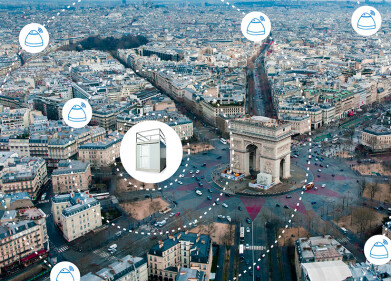Air Monitoring
Mercury Removal Market to Exceed $1 Billion/yr by 2015
Sep 05 2014
Next year U.S. utilities, industrial boilers and cement plants will be required to limit mercury emissions from stack exhausts. This set of laws alone will immediately double the market for mercury removal consumables and hardware. When this new opportunity is combined with the markets in waste incineration, mining and oil and gas, the total will exceed $1 billion/yr. This is the conclusion reached in the McIlvaine Mercury Air Reduction Market.
The largest established market is waste incineration. Waste-to-energy plants around the world have invested in mercury reduction systems. Early European systems installed in the 1980s utilized moving carbon bed reactors following wet scrubbers. France was the first adopter of dedicated fabric filters with powdered activated carbon injection. Various adaptations of this technology have been embraced in Asia, the Americas and elsewhere. As a result, waste incineration plummeted from being the leading source of mercury pollution to where it was far below power plants, cement plants and other sources.
The new sets of regulations address a much larger market. The U.S. power plant market will be over $0.5 billion/yr. Only 10% of the coal-fired power plants are in the U.S, so, the ultimate market worldwide is very substantial. China has passed rules for power plants which allow mercury emissions at ten times those of the new U.S. regulations. However, China plans to tighten the standards to the U.S. levels by 2020.
There is a need to remove mercury in natural gas to a few ppb. The reason is that mercury attacks materials in heat exchangers and other process equipment. With all the unconventional new sources of natural gas, the mercury reduction market in this sector is increasing substantially. The largest single increase will be in China where there are plans for 40 projects to convert 1.5 billion tons of coal per year to gas, chemicals and gasoline. Most of the plants will use indirect gasification and will need to reduce mercury from the product gases. Since the U.S. burns less than 1 billion tons of coal per year to generate electricity, the Chinese coal to fuels market alone will be 1.5 times larger. Since China burns 3 billion tons of coal per year for power generation, the total market will be 4.5 times larger.
There is substantial investment in mercury control technologies. Many advances are being achieved in:
- Activated carbon efficiency vs. cost
- Non-carbon sorbents such as silicates and kaolin
- Halogen chemicals to make mercury soluble
- Chemicals to prevent re-emission from scrubbers
- Treatment of fuel prior to shipment to the power generator.
For more information on Mercury Air Reduction Market, click on: http://ilmt.co/PL/mWp
Digital Edition
IET 34.2 March 2024
April 2024
Gas Detection - Biogas batch fermentation system for laboratory use with automatic gas analysis in real time Water/Wastewater - Upcycling sensors for sustainable nature management - Prist...
View all digital editions
Events
May 13 2024 Munich, Germany
May 15 2024 Lund, Sweden
May 15 2024 Frankurt-am-Main, Germany
May 20 2024 Columbus, OH, USA
May 21 2024 Lagos, Nigeria


















